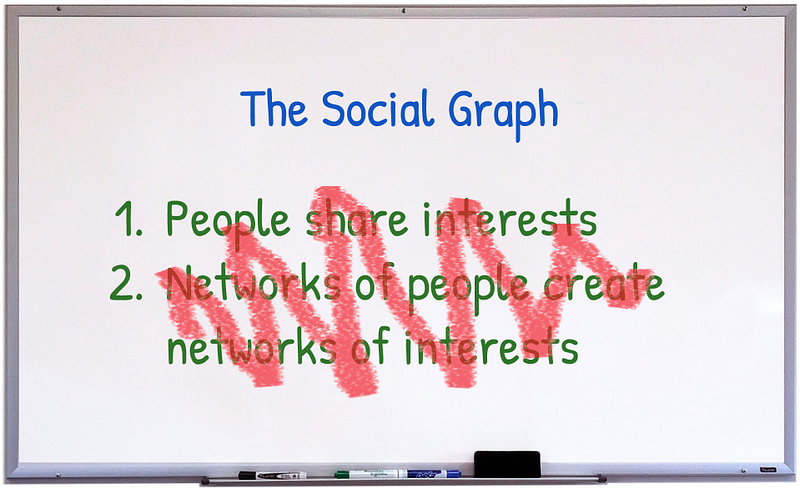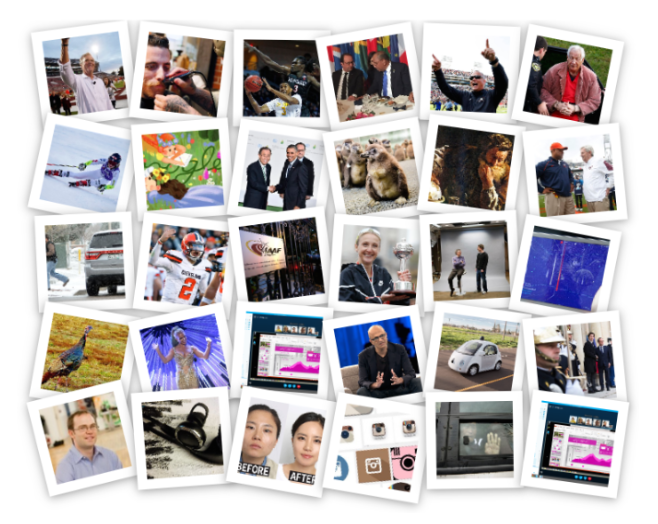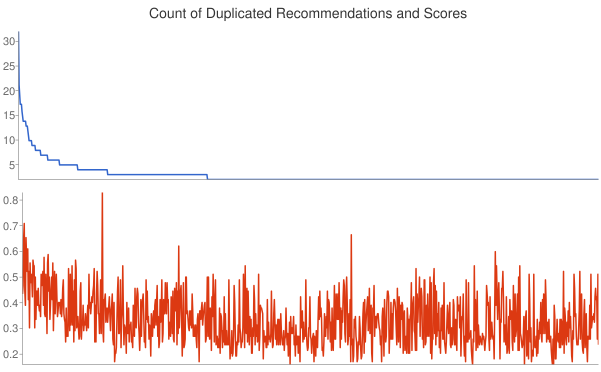
The Social Graph Must Die
Have we reached the breaking point? Has our collective exhaustion with social media — the incessant notifications, the oppressive filter bubbles, the outright denial of our individuality — finally exhausted the excuses, apologies, and band-aid fixes?
Here’s the #ElephantInTheRoom: The social graph is a terrible basis for matching people to information. This is probably not a message that will be welcomed by the corporate giants and countless ventures that are banking on the social graph, but it’s an argument that’s long overdue. The social graph must die.
To be clear, the social graph is not social media. The former is the model or representation of the relationships between people. It’s the foundation upon which social media services match people to information. And in this capacity, the social graph is irredeemable.
Social Graphs Don’t Make Sense
Every model of information matching that’s based on the social graph assumes this proposition to be true: People share common interests.
It’s such an obvious statement, it’s rarely challenged. But when examined in the context of a network, that is a social graph, the fallacy is obvious. If you imagine that any individual in your network shares some of your interests, you’ll concede that they hold interests that diverge from yours. When compounded in the social graph, your interests quickly become overwhelmed by the interests that are not yours.
We’ve long suspected the social graph has considerable theoretical shortcomings. Even in the earliest days, before trolling became a profession, social communities tended to become fragmented and divisive. Even though a social graph may begin as one focused on shared interests (such as a hobby or a profession), these connections are impermanent. Interests are like water, powerful and difficult to contain. If this feels academic, I’m sure you’ve felt its effects, in the countless meandering discussions that are irrelevant to your interests and the awkward moments when you realize that you didn’t really know your acquaintances.
Critically, in the social graph, these informal, ad hoc relationships are made permanent. People are left with the chore of painstakingly curating their social relationships to match their evolving informational needs. Rather than giving people a boat to manage the flow of their dynamic interests, we give them a leaky bucket and the Sisyphean task of mopping it up.
Interests are like water, powerful and difficult to contain. Rather than giving people a boat to manage the flow of their dynamic interests, we give them a leaky bucket and the Sisyphean task of mopping it up.
The technologists among you will argue that this is an antiquated perspective: Married to the power of AI and machine learning, social graphs become highly dynamic, probabilistic representations of our interests. This is a misdirection. A sturdy tower built on a shaky foundation will still fall, and the social graph is that shaky foundation. The bad experiences of our social media are mediated by the most AI-capable organizations on the planet.
The problem, at its core, is that the social graph is an unfit model for our interests.

Social Graphs Are Measurably Unfit
So again, as the foundation for matching information to people, the social graph doesn’t make sense, even on the whiteboard. But if that’s not enough, we’ve analyzed these arguments under a controlled experiment on Twitter, evaluating hundreds of thousands of content interactions and the interests people express.
Contrary to the central proposition of the social graph, people are not a Borg of shared interests. We are individuals. Rarely will a content item appeal to a broad audience (which is why content that goes viral is the thinnest minority). Much more frequently, there is a long tail of items that align uniquely with individuals. This individuality is apparent in the scores that evaluate the degree of interest for each content item. The scores vary widely, with some individuals expressing interests substantially similar to that of the content item and others much more distantly related.

This analysis quantifies the inherent tension between the social graph, as a model of social relationships, and the reality of our individuality, the vast and diverse landscape of our interests.

The Interest Graph Doesn’t Need to Socialize
So how to move forward? Start with a proposition for information matching that makes sense: People need information where the subject matter — the semantic content — matches their individual interests. This interest graph should encode the specific interests of individuals, not their social connections.
This isn’t that sterile mule, the social interest graph: “Interest graphs or interest networks can in some cases be derived from social graphs…” This statement is technically accurate, in the same sense that a tower can technically be built on a shaky foundation. Just proceed cautiously if you’re staking your venture on it.
Although I’m loath to throw the social graph a life preserver, I will acknowledge use cases where the central proposition of the social graph holds. My family uses a messaging app based on the social graph. It works great because the social ties endure and the interests are immutable. If the use case is congruent with these attributes, a social graph will work just fine. Companies like Amazon and Netflix have demonstrated this utility. (Yet even in these narrow domains, the social graph becomes increasingly ineffective as the interests of the population thin out!)
Our error is when we indiscriminately apply the social graph to cases where dynamic interests, not socializing, dominate. Can you understand how I might love the Boston Bruins but feel quite indifferent about the NHL? That I’d love a good history of technology but have zero interest in the new iPhone? We deserve so much more than generalizations based on communities of interest. We deserve to be treated like individuals.
Somewhere along the line, our perspectives on information matching became inextricably tied to connecting people. Perhaps the misstep is rooted in the fallacy of common interests, debunked above. Perhaps it’s just a common pitfall with any disruptive technology, where an innovation is awkwardly bolted on to the prevailing way of doing things. “To connect thoughts, we must connect thinkers.”
In the digital realm, this isn’t true, the constraint of socializing doesn’t hold. The interest graph need not be a bastardized social interest graph, or a euphemistic serendipity graph, or a statistical generalization of some community of interest. We can create a semantic graph that captures the unique meaning of your individual interests.
The social graph must die, and the interest graph will kill it.
